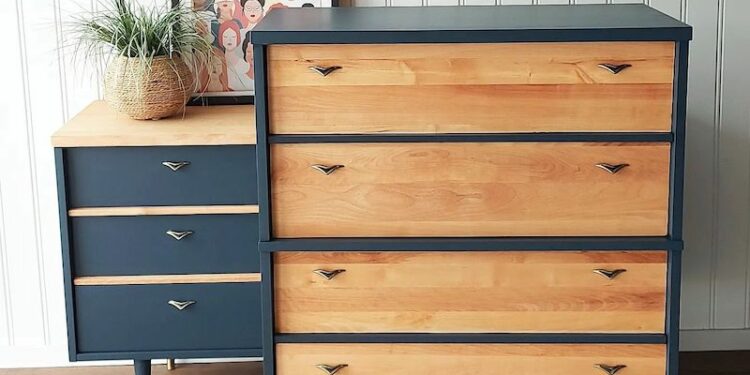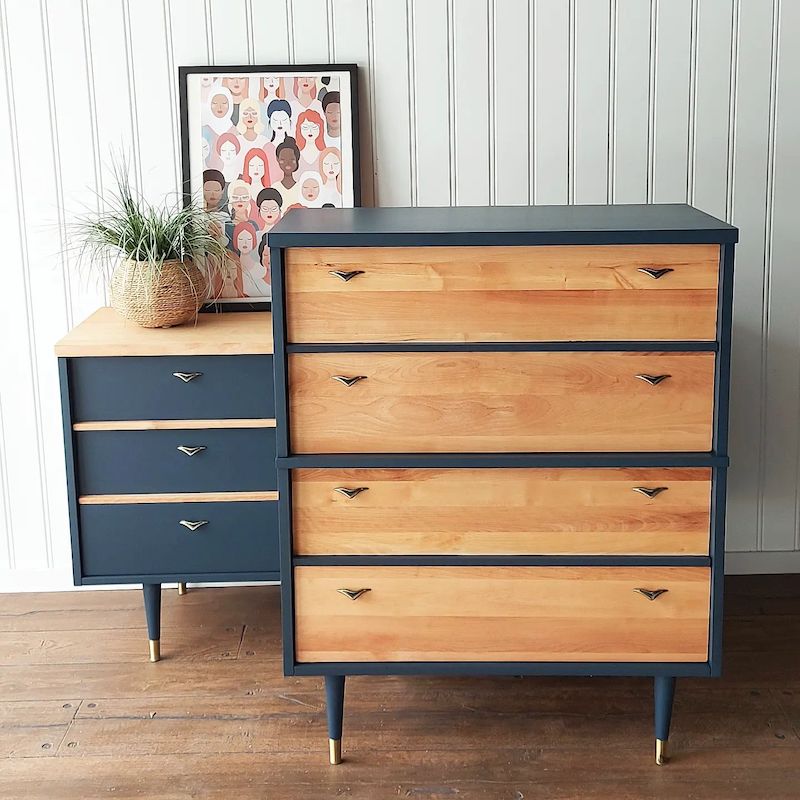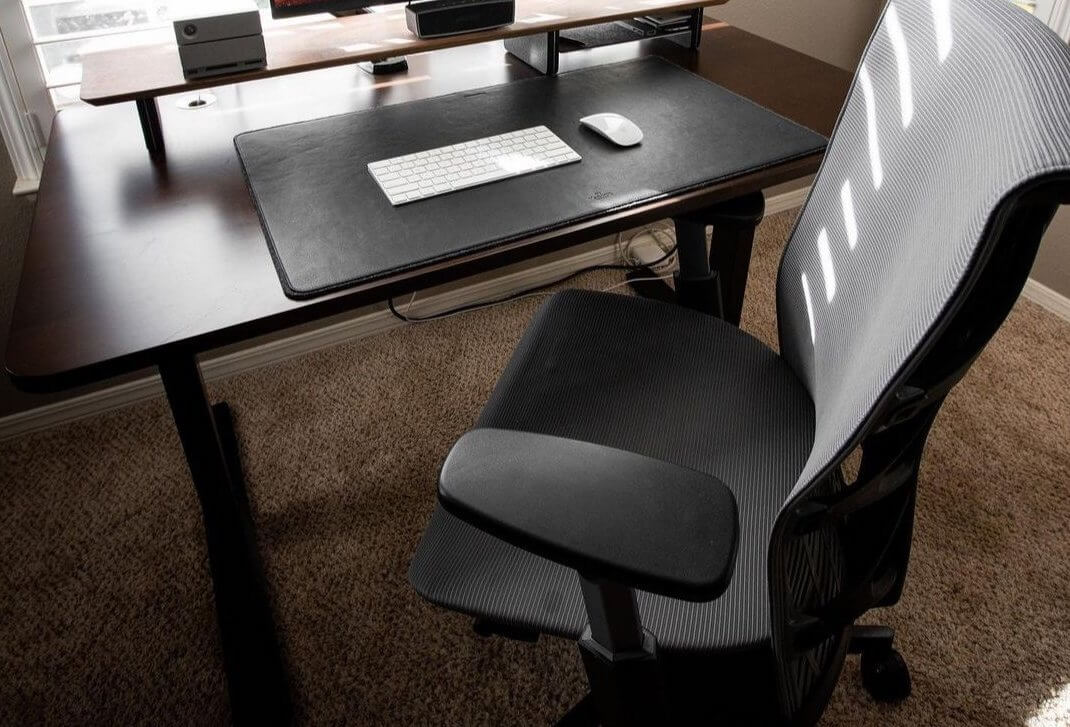Refinishing old furniture means giving it a new lease on life. This can involve sanding down the surface, priming, and then painting a new color. You can also add new hardware, such as drawer pulls or knobs. Or you can try out different finishes, colors, and styles to create a piece that is truly unique. This is a fun and creative project that can save you money and help reduce wastefulness.
Don’t throw away your old furniture, refinish it!
– Instead of buying expensive furniture, you can save a lot of money. Generally, it takes from $50 to $500 on services, maybe it’s cheaper than if you choose the work yourself. Besides, it can add character to your home: new furniture can look nice, but it can often be quite impersonal.
– If you enjoy being creative, refinishing old furniture can be a great way to express your colors, finishes, and hardware to create a piece that is truly unique. If you have never refurbished furniture before, then this can be a great opportunity to learn new skills. You will learn how to use different tools, how to sand furniture, and how to paint it properly.
– Finally, your act can reduce waste and environmental impact: when you buy new furniture, it often comes wrapped in packaging material that is difficult to recycle. Refinish furnitures to avoid this wastefulness and have a smaller environmental impact.

The signs that show your furniture is in need of a little TLC
– The finish is peeling or flaking, it needs to be refinished. This will prevent the paint from chipping and flaking off in the future.
– The paint is chipped or faded, then it also needs to be refinished. A new coat of paint can help to restore the piece to its original condition.
– The surface is scratched or dented, you need to sand it down and re-paint it, which hides any imperfections and restores the piece to its original condition.
– The hardware is old or rusty, it might need to be replaced. New hardware can give the piece a fresh new look.
– The furniture is no longer in style, and what is in fashion today might not be in fashion tomorrow, then you might want to consider refurbishing it. You can give it a new coat of paint or change the hardware to make it more fashionable.
Tools to refinish furniture
1. Electric sander: make the process much easier. It removes any old paint or finish and smooths out any scratches or dents.
2. Primer: a coat of primer helps the new paint to adhere to the furniture better and covers up any existing colors or stains.
3. Paint: let’s choose high-quality paint for your project. This will ensure that the finish is durable and long-lasting.
4. Hardware: if you removed any hardware in step one, reattach it before you start painting.
5. Sandpaper: sandpaper necessary for smoothing out any imperfections in the wood.
6. Cleaning supplies: you will need to clean the furniture before you start painting it. This helps to remove any dirt or debris that could interfere with the paint job before you begin any type. List some cleaning supplies:
– Mild soap. It not only doesn’t damage the finish on furniture but also helps to remove any dirt or grime that may be on the surface.
– Furniture polish helps to protect the finish on furniture and make it shine.
Let’s get started
1. Start by removing any hardware ornaments from the piece. This might include drawer pulls, knobs, or hinges. This is difficult. If you don’t, you won’t be able to get to all of the surfaces that need to be sanded and painted. In addition, the hardware could get in the way or interfere with the paint job.
2. Next, sand down the surface of the furniture. This removes any scratches or blemishes, and it gives the paint something to grip onto. With an electric sander. It’s an important step in the refurbishing process that creates a smooth, finish, and makes the paint adhere better.
3. Apply a coat of primer to the furniture that the paint stays on for longer, and cover up any existing colors or stains.
4. Paint the furniture in your desired color. Be sure to use high-quality paint, so that the finish will be durable.
5. Finally, reattach any hardware that you removed in step one. Be careful not to damage the paint job while doing so!
Refurbishing old furniture is a great way to add some personality to your home and to save money. By following these tips, you can create a piece that is stylish and unique.
Tips for refinishing old furniture
1. Using the correct tools make the job much easier. Be sure to use an electric sander for sanding, and a primer that is designed for furniture for priming.
2. Refurbishing furniture can be a time-consuming project, so take your time and do it properly. Rushing through the project can lead to poor results.
3. Sanding every surface of the furniture. This will help to create a smooth and even finish.
4. Painting in thin layers to avoid drips or runs, and helps the paint to dry faster.
5. Painting dries fully to finish is durable and long-lasting.
6. Apply a second coat of paint to achieve the desired results. Be sure to allow the first coat to dry completely before applying the second coat.
7. Enjoy your new furniture once you have completed the project. You can use it in your home or office, or you can give it as a gift.
Protect the refinished furniture
1. Apply a clear coat of varnish or polyurethane. This protects the paint job and make it more durable.
2. Use coasters to prevent stains and damage to the paint job.
3. Avoid exposure to sunlight which can fade the paint over time, so keep your furniture out of direct sunlight. If possible, store it in a cool, dark place when not in use.
4. Dust regularly to keep it clean and free of dust and debris. This protects the paint job and keeps it looking fresh.
5. Clean with a damp cloth. Do not use harsh chemicals or solvents, as these could damage the paint job.
Antique furniture restoration techniques
1. Identify the type of finish: before you start the restoration, you will need to identify the type of finish on the furniture. This can be done by examining the surface closely and looking for clues such as a sheen or a gloss.
2. Use the correct products: once you have identified the type of finish, you need to use the correct products to restore it.
3. Start with the least invasive treatment: always start with the least invasive treatment and work your way up if necessary. This avoids damage to the furniture and will also help to keep costs down.
4. Be patient: restoring furniture can be a time-consuming process, so be sure to be patient. Rushing through the project likely results in poor results.
5. Sand every surface, use primer, paint in thin, paint dry fully: conduct like refinish furniture
10. Apply the second coat of paint: if necessary, you can apply a second coat of paint to achieve the desired results. Allow the first coat to dry completely before applying the second coat.
11. Finish with a clear coat: once you have applied the second coat of paint, finish with a clear coat of varnish or polyurethane. This protects the paint job and makes it more durable.
12. Allow the furniture to dry completely before using it. This prevents any damage from moisture.
13. Enjoy your newly restored furniture!









